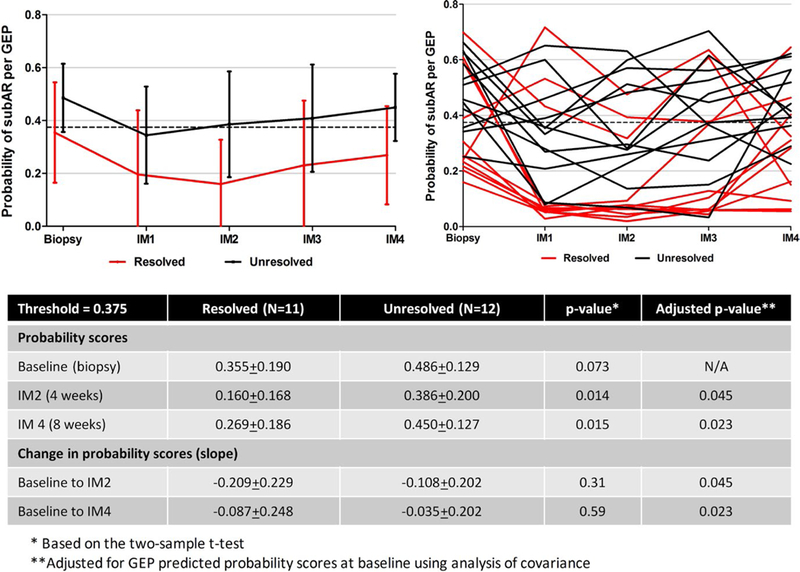FIGURE 3.

Predictive probabilities after diagnosis and treatment of subclinical acute rejection (subAR). Gene expression profile (GEP)–based probability scores for intense monitoring (IM) subjects (n = 23) were determined every 2 weeks (IM visits 1‐4) after the diagnosis of subAR. While treatment was triggered by the local biopsy report in 19 of 23 subjects, resolution of subAR was assessed by comparing the centrally read histologic findings of the baseline biopsy to the repeat biopsy done at 8 weeks. Of 23 subjects (8 treated), 11 showed improvement of the biopsy (resolved [red lines]), whereas 12 (11 treated) showed either no improvement or worsening (unresolved [black lines]) rejection. Trends in probability scores are shown for the 2 groups on the left and for individual subjects on the right. There were differences in baseline predictive probabilities that did not reach significance (P = .073). Significant differences were seen between the group with resolution of subAR compared with the unresolved group in the predicted probabilities of the subAR gene expression profile at 4 (P = .014) and 8 (P = .015) weeks. When baseline values were adjusted, these differences remained significant between the 2 groups, as did the slope between baseline and 4 (P = .045) and 8 weeks (P = .023)
